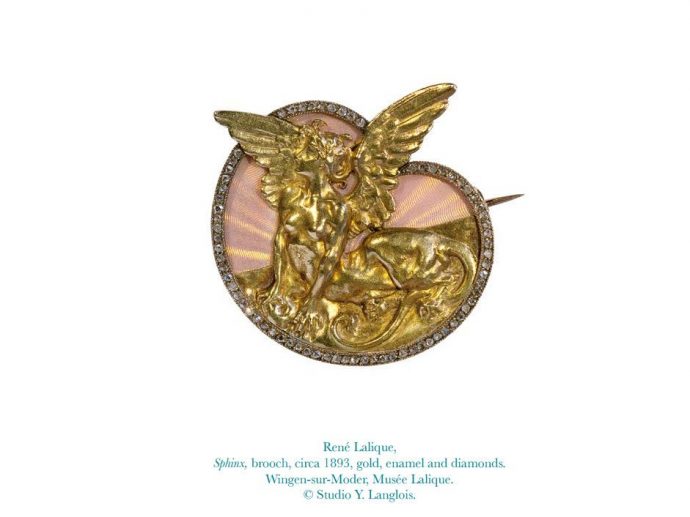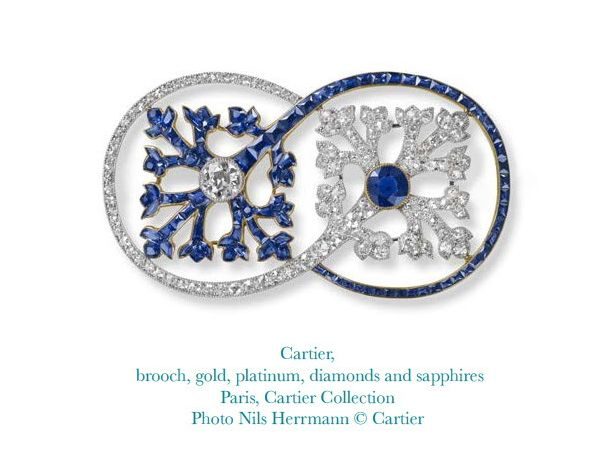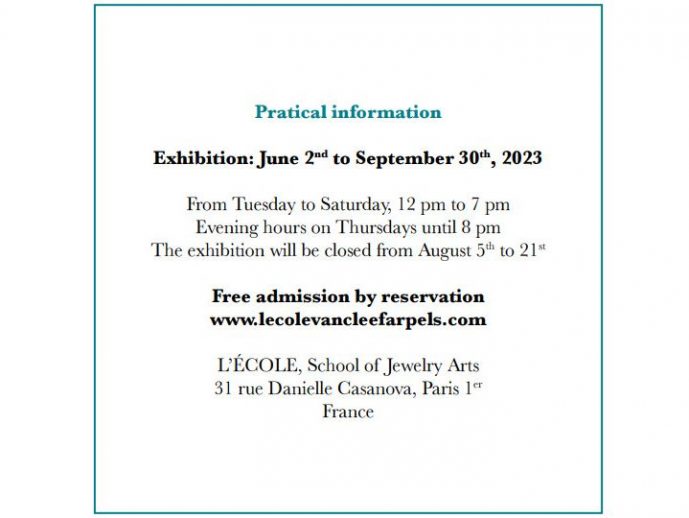Categories more
- Adventures (17)
- Arts / Collectables (15)
- Automotive (37)
- Aviation (11)
- Bath, Body, & Health (77)
- Children (6)
- Cigars / Spirits (32)
- Cuisine (16)
- Design/Architecture (22)
- Electronics (13)
- Entertainment (4)
- Event Planning (5)
- Fashion (46)
- Finance (9)
- Gifts / Misc (6)
- Home Decor (45)
- Jewelry (41)
- Pets (3)
- Philanthropy (1)
- Real Estate (16)
- Services (23)
- Sports / Golf (14)
- Vacation / Travel (60)
- Watches / Pens (15)
- Wines / Vines (24)
- Yachting / Boating (17)
Published
04/04/2023 by L'École des Arts Joailliers avec le soutien de Van Cleef & ArpelsFrom June 2nd to September 30th, 2023, L’ÉCOLE, School of Jewelry Arts will be staging a new exhibition illustrating the unique place occupied by jewelry at the turn of the 19th and 20th centuries, through a selection of almost 100 pieces from museum, patrimonial and private collections.
From the 1880s onwards, aesthetics underwent a profound change. A radical renaissance of the imaginary, enriched by an extraordinary dissemination of scientific knowledge, enhanced creative potential in all spheres of art. At the end of the century in France, this movement converged towards Art Nouveau in a
creative spirit that enlivened the work of the workshops.Far from being simply the reflection of a history of forms written elsewhere, jewelry was fully engaged in a fascination with nature and its phenomena. Free from practical considerations, the only constraint being that associated with working with metals and stones, precious objects lent themselves admirably to all sorts of experiments, allowing the most varied combinations and the most evocative fantasies. Artists such as René Lalique, Georges Fouquet, Élisabeth Bonté, Victor Prouvé, Jean Dampt, Jules Desbois, Edward Colonna and Eugène Grasset then took possession of an art form for which the primary source of invention was its materials.
From a technical point of view, it is mainly characterized by its subtle combination of stones, metals and materials of different value, based on a conviction that the beauty of a piece of jewelry lies in its artistic design rather than the cost of its components. The latter, ductile, colorful and shimmering, form feminine silhouettes, foliage and flowers, insects and enchanting arabesques. Brooches, combs, pendants and rings borrow the flowing curves of the natural world, in a bewildering diversity of themes often viewed through the prism of dreamlike fantasy.
Although, in the early 1910s, artists opt for an esthetics more inspired by geometry, Art Nouveau ultimately developed a rich legacy: its decompartmentalization of the arts, contact with the sciences and assimilation of a living visual culture would ultimately modernize the art of jewelry.
Masterpieces in three chapters
Divided into three sections, the exhibition at L’ÉCOLE, School of Jewelry Arts allows visitors to explore
developments that were based as much on the use of unusual materials as on the adoption of new visual repertoires.
1. Fairy-like nature
Past styles were not consigned to oblivion, but symbolism – which first appeared in the 1880s –
served to revive them. Monsters and hybrid creatures peopled a fantasy world, as can be seen
in René Lalique’s Sphinx brooch and Georges Fouquet’s Serpent de mer ailé (Winged Sea Serpent) 1corsage ornament.
2. Bloomings
An extraordinary interest in botany and the phenomena of generation and growth encouraged artists to associate plants with the fluidity of sap, represented by curves and interlacing. Associated with the world of plants, reptiles, insects and amphibians symbolized apparently disordered and sometimes monstrous proliferation. Interest in life’s manifestations, movement and evolution changed how the ancient theme of metamorphoses was perceived. René Lalique’s interpretations were the freest: a woman emerges from a stalk and stretches her dragonfly wings; creatures develop into flowers. Through his consummate skill in the art of enamel, Lucien Hirtz brings a twilit forest to life: its diaphanous luminosity adorns a brooch designed for the Maison Boucheron.
3. Ornamental nature
Ultimately, nature’s creative process itself provides inspiration. The infinitely small, which a microscope’s lens reveals as a cell or crystal, presents an abstract and ordered geometric structure. Thus, nature is no longer the opposite, but rather the source of abstract ornament.
This can be seen in the glittering mother-of-pearl and gold seascape covering a tortoiseshell comb made by Georges Fouquet around 1905.
A glance at the heyday of jewelry design
Under the curatorship of Rossella Froissart (École Pratique des Hautes Études EPHE-PSL), the exhibition proposes to incorporate French jewelry created in the decades 1880–1914 within a broader historical discourse in which the restrictions of a stylistic label are not imposed on creative works. To make it clear that Art Nouveau is defined by its complexity, around one hundred selected pieces are on loan from museum, patrimonial and private collections.
The exhibition’s original approach fully responds to the scientific missions undertaken by L’ÉCOLE, School of Jewelry Arts since its creation in 2012, with the support of the Maison Van Cleef & Arpels. Through its courses, talks, workshops, exhibitions, publications and research, L’ÉCOLE strives to promote the art of jewelry in all its dimensions.
A book co-published by L’ÉCOLE, School of Jewelry Arts and Norma Editions
A New Art
Metamorphoses of Jewelry, 1880 – 1914
Authors:
Rossella Froissart, Curator of the exhibition and Research Director
at the École Pratique des Hautes Études (EPHE-PSL),
with the collaboration of Florent Guérif, PhD student at the École
Pratique des Hautes Études (EPHE-PSL) and tutor at the Ecole du Louvre,
and Paul Paradis, art historian and teacher at L’ÉCOLE, School of
Jewelry Arts.
Co-published by L’ÉCOLE, School of Jewelry Arts and Norma Editions
Format: 220 x 280 mm
Number of pages: 208 pages; illustrations: around 200
Retail price: €39 incl. tax
Languages: French/English
Date of release: 19 May 2023
Pratical information
Exhibition: June 2nd to September 30th, 2023
From Tuesday to Saturday, 12 pm to 7 pm
Evening hours on Thursdays until 8 pm
The exhibition will be closed from August 5th to 21st
Free admission by reservation
www.lecolevancleefarpels.com
L’ÉCOLE, School of Jewelry Arts
31 rue Danielle Casanova, Paris 1er
France


















